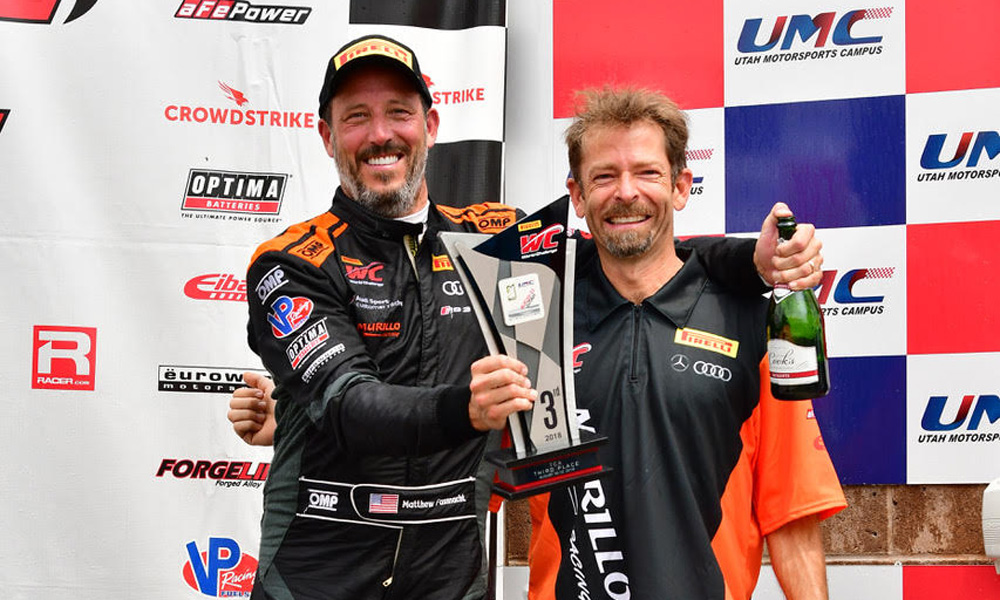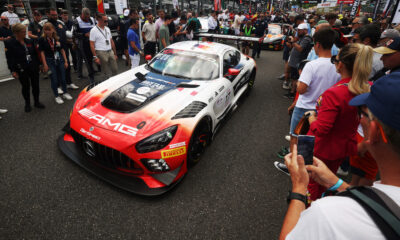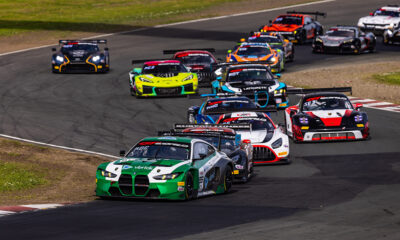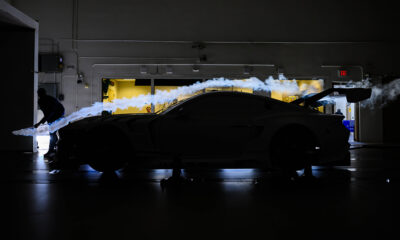
Photo: Matt Fassnacht
Reigning Pirelli World Challenge TCA champion Matt Fassnacht made the jump to the TCR and GTS classes this season driving for Murillo Racing.
This week in the Pirelli Paddock Pass, Matt fills us in on competing in both classes this season, what the biggest step up from an MX5 Cup Global car to TCR and GT4 has been, and more.
How has the transition from TCA to the TCR and GTS categories gone?
“The sensory differences between and MX5 Cup Global car and a GTS Mercedes AMG GT4 are quite huge, most notably due to having nearly triple the horse power.
“Prior to the first race weekend, I had never even been in a touring car with more than 250hp, let alone 500.
“There were new pressures: large fields of talented, well established racers and a way more expensive, faster, and ‘scarier’ car to pilot.
“I was given new tools I had never used before: adjustable traction control, adjustable antilock brakes and brake bias (I was afraid to touch that thing until mid-season).
“I also now had aero adjustments at my disposal. All these new tools massively complicated each weekend’s short, high-pressure car tuning process.
“Early on, I was afraid to open my mouth for fear of looking like a fool, but by mid-season I had the confidence to express what changes I wanted and now understand all the adjustments at our disposal.
“Murillo Racing’s Ken Murillo and Bud Wilkinson are not only among the most talented engineers out there, but also great teachers.
“Transitioning to the TCR Audi RS3 LMS was an even bigger challenge. With similar speeds as the GT4 but no ABS, input smoothness was paramount.
“Add to that my non-existent experience in a front wheel drive race car, I had my work cut out for me. Overall, the transition was super challenging but completely worth it.
“Early on, defining this year as a learning year was a massive understatement. In the end however, I progressed more as a driver and car developer this season than in the previous few years combined.
“I could never have progressed as well without the diligent support of my friend and professional race coach Justin Piscitell.”
What are the benefits of racing in two classes in the same weekend?
“Primarily I race in two classes in the same weekend to maximize time on track. Life balance is the hardest part of pursuing this passion.
“If I’m at the track, I want to be in a car as much as is physically and mentally possible.
“Also, while the cars are very different, the fundamentals of car dynamics are close enough that my learning curve was much shorter.”
What are the challenges of that busy calendar?
“At the beginning of the season, as I contemplated running both series, I was concerned about my ability to focus on each as the cars are so different.
“I didn’t want to run TCR at the expense of my accomplished GTS teammate Christian Szymczak.
“I was concerned that switching from front wheel drive no ABS to rear wheel drive ABS would be a problem. After the first weekend at COTA I was even less sure.
“However, by the time we got to Lime Rock, I translated things I tried from one car to the other, which benefitted performance in both cars.
“For example, the Turn 1 braking approach I improved in qualifying the TCR Audi gave me the insights to go from 17th to 4th in the first GTS race.
“Overall, it was a net positive but exhausting at times. The biggest challenges were physical and mental.
“At COTA, Portland and Utah I raced in back to back races two days in a row with mid 90 degree heat.
“In Utah, I had to give up a podium celebration in GTS to start the TCR race on time. I changed suits in the open parking lot.
“I spent three times more time working out leading up to and during the season than I ever had before.
“My Equinox trainer Leo Troso developed a holistic regimen of nutrition, weights, cardio, sleep and meditation that was critical to my ability to function let alone succeed in multiclass weekends.
“The mental challenge was often more difficult than the physical. Without a lot of track time during the year I have to rely on my study of data and video between sessions to get up to speed.
“I’m an analyst by trade so I study, study, study the data and video from each session.
“I put in 15+ hour days looking for tenths and then hundredths of seconds for the next session on track. ”
What has the highlight of the season been for you?
“An early highlight of the year was leading the GTS race at VIR until a drive through for pit time violation.
“After VIR, the next four races were defined by unfortunate contact with other cars.
“Results this year don’t show what we were capable of, but finishing the GTS season with a P3 and P4 at Utah was certainly the highlight of the season.
“Leading the factory TCR Hondas at Utah and dicing with Ryan Eversley in Race 2 was also a highlight of my year.
“Objective success in racing is something that I absolutely target but I realize much of what determines who wins and who is the championship is out of my control.
“I work very hard to focusing on the things I can control and measure myself from that. On paper, this wasn’t a successful year.
“Relative to my objectives and what was in my control, it was a huge success.”
What makes Pirelli World Challenge the series that you choose to race in?
“I love the sprint race format as it gives you two chances a weekend. The people who run and operate PWC are earnest and committed.
“I like them. The schedule allows for a nice balance in my life and it attracts a great fan base and field of teams and drivers.”
























